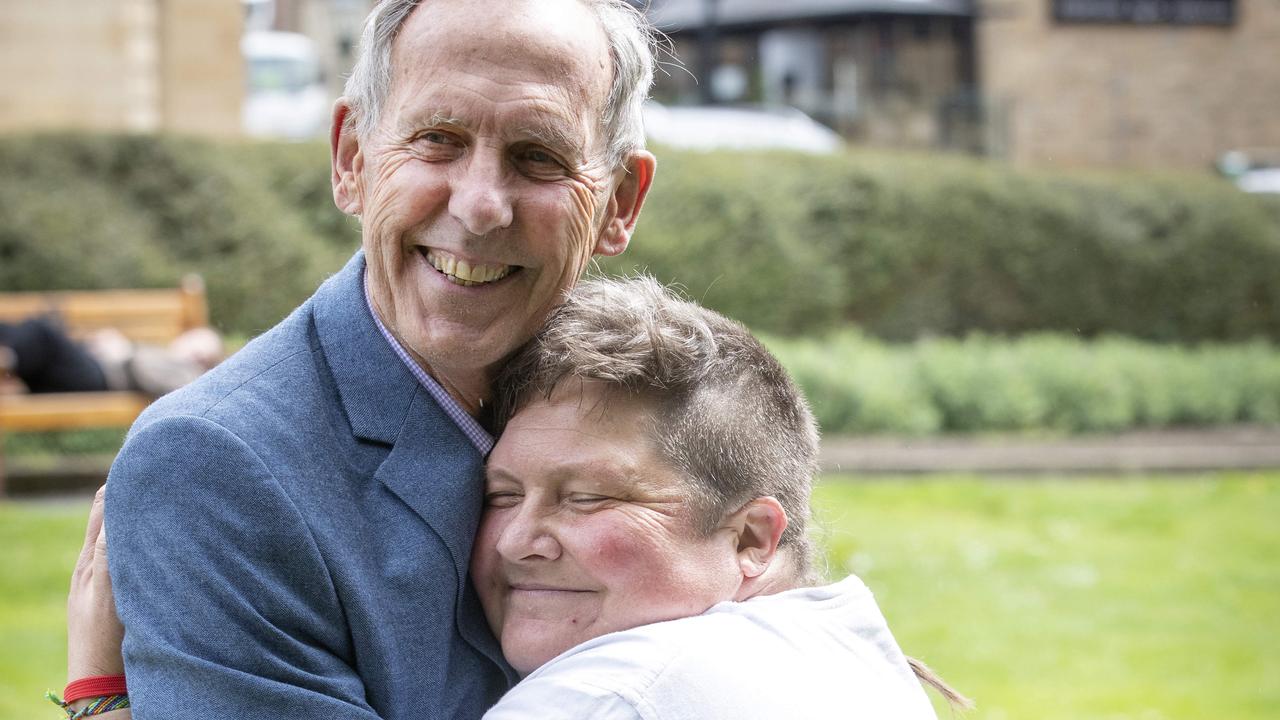OPINION: 27 reasons why Australia is the lucky country
AFTER battling cancer, long-time Sunshine Coast resident Geoff Glanville has come up with 27 reasons why Australia still is the lucky country.
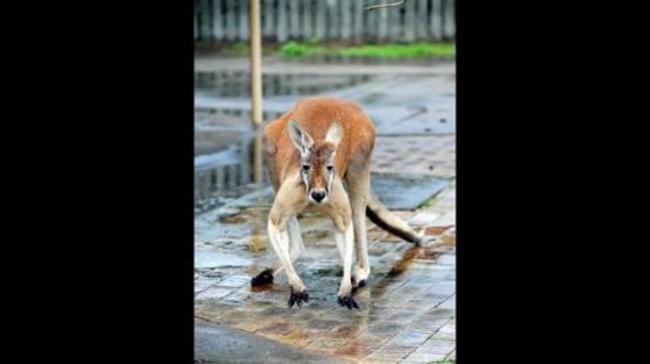
Opinion
Don't miss out on the headlines from Opinion. Followed categories will be added to My News.
LONG-time Sunshine Coast resident Geoff Glanville has come up with 27 reasons why Australia still is the lucky country. Here is his edited opinion piece.
2014 was a challenging year personally.
After a cancer battle lasting some years I am in remission but still facing the residual effects of an aggressive treatment regime.
Additionally I have witnessed friends, family and associates facing the heartache of financial stress, relationship breakdown, divorce, dementia, anxiety, despair, depression and suicide.
During my hospitalisation, recuperation and forced retirement, I have had a lot of time for reflection and self and societal analysis.
Over the last couple of years I have had more time than most my age, to read each days newspaper, watch television and engage in commentary or just "lurk" on social media.
In doing all this, I have come to the unpleasant conclusion that too many in our community, particularly the young, have a very negative set of beliefs about what Australians as a culture have achieved and what we as Australians enjoy by way of societal benefits.
Most concerning for me, were that these negative beliefs were both cultivated and nurtured by elements of our society, and that such negative beliefs may very well have been instrumental in some of the more tragic circumstances experienced by my circle and I expect that of many others as well.
We live in a blessed country and are part of a caring and generous community. Indeed caring, compassion and generosity, the "fair go for all," is a part of the very fabric of our society.
For Australia to be in a position to continue to deliver these elements to its citizens, and to the less fortunate at large, that fabric needs to be reinforced by financial stability.
Some cynics might say that one side of Australian politics is interested in building an economy while the other wants to build a community.
I challenge that assertion.
Both sides want to build a community, but political games often interfere with the delivery of the message that a stable national economy is the very foundation of a vibrant and caring community.
During my time of deep reflection, I have come to fear those with an agenda for change, be that change for good, ill or open for debate.
I fear them because it is apparent that they see the best way to achieve their aims, is to muddy our own achievements as a nation, and to paint us as something less than we are.
This is apparent in poorly researched articles in the mainstream media but is at its worst on various social media platforms.
It is here where zealots live in an echo chamber of their own opinions and where denigration and bile and hatred is too often the order of the day.
I am in the happy position, one of my own making, where my finances are stable; however the same cannot be said of the finances of our country.
I despair that both sides of the political divide cannot at least agree that budget repair is urgently needed and that this may involve a degree of pain now.
In an endeavour to counteract the negative narrative, I have spent some time researching the more positive elements of our society.
Australians are blessed in so many ways, so let me give just a few examples.
If some points are well known to you, take the time to reflect on your good fortune.
If some are new to you, be proud of our achievements, and if there are some you dispute, feel free to research them.
If need be, feel free to correct me, but please be civil.
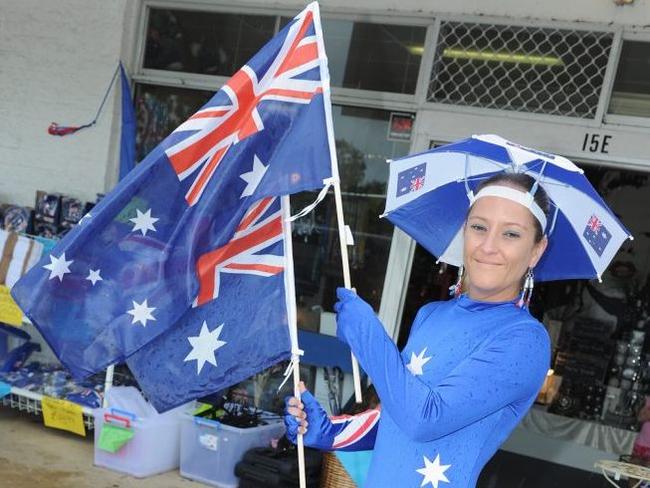
As you come to appreciate how much the current Australian community has to enjoy, give some thought as well to how painful it would honestly be, for us all to give a little up now and in so doing help to ensure that the next generation and the one after that, is in a position to enjoy them too.
1. As at December 2014 the minimum Australian wage is AU$16.87 per hour while the equivalent wage in the U.S. is AU$8.75 per hour and in New Zealand AU$14.36 per hour.
2. The standard Australian working week is 38.5 hours worked Monday to Friday.
3. Additional to these minimum rates Australians enjoy a host of wage loadings. For example if someone is required to work on a Saturday a 25% additional hourly rate is payable. For work on a Sunday a 50% additional hourly rate applies and for work on a public holiday a 150% additional hourly rate is payable.
4. In Australia, in addition to their wage, workers have an amount equal to an additional 9.5% of that wage, deposited into a superannuation/"pension" fund.
5. After the first full year of employment Australians receive a minimum 4 weeks paid annual holidays a year.
6. In what I believe to be the only provision of its type in the world, when Australians are on that 4 week annual holiday, they receive a 17.5% increase in their ordinary rate of pay which is termed "leave loading."
7. Australians receive a minimum of 10 days sick leave a year paid at their full rate of pay.
8. Australians receive a minimum of 2 days paid compassionate leave a year.
9. Depending on the State and Territory in which they live, Australians get between 10-12 days a year of paid public holidays.
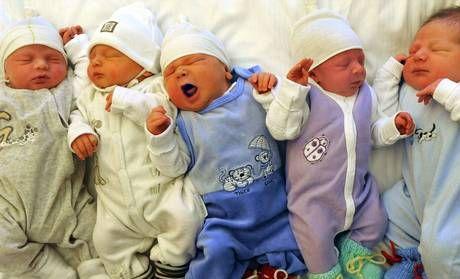
10. While this is currently up for review upwards, Australians currently are entitled to paid parental leave for a minimum of 18 weeks paid at the rate of the National Minimum Wage.
11. After 10 years of employment with a single employer, Australians are paid long service leave at the rate of one week for every 60 weeks of employment.
12. Australians pay no income tax on the first $18200 of income.
13. Australians enjoy one of the most generous list of social security payments offered anywhere in the world. Some of these may be discussed in more individual detail amongst this numbered list.
The payments provided by the Federal Government are listed below in alphabetical order. These are supplemented by additional State and Local Government allowances:
Abstudy; Age Pension (Indexed to increase every year); Agents and Access Points; Assessment Subsidy for Overseas Trained Professionals (ASDOT); Assistance for Isolated Children Scheme; Assurance of Support; Australian Government Disaster Recovery Payment; Australian Victim of Terrorism Overseas Payment; Austudy; Baby Bonus; Bereavement Allowance; Bereavement Payment; Carer Adjustment Payment; Carer Allowance; Carer Payment; Carer Supplement; Centrelink Compensation Recovery; Centrelink Confirmation eServices; Centrelink Indigenous Phone Services; Centrelink online accounts; Centrelink online letters; Centrelink payment summary; Centrelink phone self service; Centrepay; Child Care Benefit; Child Care Rebate; Child Disability Assistance Payment; Clean Energy Advance; Commonwealth Seniors Health Card ; Community Development Employment Projects Participant Supplement; Community Engagement Officers; Crisis Payment; Dad and Partner Pay; Disability Employment Services; Disability Support Pension; Disaster Recovery Allowance; Double Orphan Pension; Early Release of Superannuation; Education Entry Payment; Electronic Messaging; Electronic Verification of Rent; Energy Supplement; Essential Medical Equipment Payment; Ex-Carer Allowance (Child) Health Care Card; Family Tax Benefit; Fares Allowance; Farm Household Allowance; Financial Information Service; Foster Child Health Care Card; Grandparent advisers; Health Care Card; Helping Young Parents; Income Bank; Income Management; Income Support Bonus; International Services; International Social Security Agreements; Job Commitment Bonus; Job in Jeopardy Assistance; Jobs, Education and Training Child Care Fee Assistance; JobSearch Facilities; Low Income Family Supplement; Low Income Health Care Card; Low Income Supplement; Mobile Service Centres; Mobility Allowance; Multicultural Service Officers; Multilingual Phone Service; Newborn Upfront Payment and Newborn Supplement; Newstart Allowance; Parental Leave Pay; Parenting Payment; Partner Allowance; Pension Bonus Bereavement Payment; Pension Bonus Scheme; Pension Bonus Top Up; Pension Loans Scheme; Pension Supplement; Pensioner Concession Card; Pensioner Education Supplement; Pharmaceutical Allowance; Refugee Services; Relocation Scholarship; Remote Area Allowance; Remote Jobs and Communities Program; Rent Assistance; Rent Deduction Scheme; Rural Call Centres; Seniors Supplement; Sickness Allowance; Single Income Family Supplement; Skills for Education and Employment; Social work services; Special Benefit; Special Disability Trusts; Status Resolution Support Services Payment; Stillborn Baby Payment; Student Start-up Scholarship; Telephone Allowance; Utilities Allowance; Widow Allowance; Widow B Pension; Wife Pension; Work Bonus; Youth Allowance; Youth Connections; Youth Disability Supplement
14. At December 2014 the Australian unemployment Rate was 6.3%
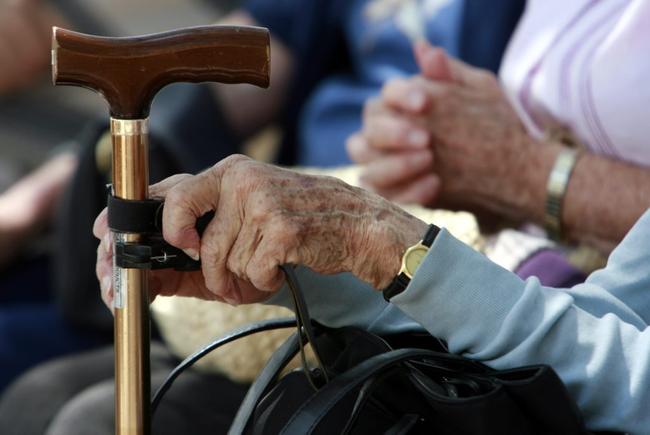
15. Australian Life Expectancy is 82.1 years; the second highest in the world. In the USA it is 78.7 years
16. Racial and interfaith harmony and multiculturalism. As a relatively new country Australia is arguably the world's most successful multicultural country.
Australia is in 2nd place in the OECD in terms of the share of immigrants in its population, with the foreign-born accounting for 26% of the total population. Overt racism is now so rare that public examples make the nightly news.
In 2009 there were 120,118 marriages recorded in Australia. About 42% involved at least one partner who was not Australian born. Indigenous Australians have a high interracial marriage rate.
Close to 70% of all married or de facto married couples involving an Indigenous person, are now mixed marriages. Australia is also very religiously tolerant.
Following terrorist attacks where Australians were targeted and/or victims, including the Bali bombings of 2002 and 2005, the attack on World Trade Center in New York, the 2004 bombing of the Australian Embassy in Jakarta, the JW Marriott and Ritz-Carlton Hotels bombings in Jakarta in 2009, the Holsworthy Army Barracks terror plot, and the recent hostage crisis at the Lindt Café in Sydney in December 2014, there were no public reprisals against Muslim Australians.

17. Australia is the most generous country on earth, according to a new global index of giving.
The World Giving Index 2012, compiled by the Charities Aid Foundation (CAF), an international charity which promotes charitable giving via companies and individuals, found Australia topped the 2012 table, and also headed a new five year index which looks at giving between 2007 and the most recent year of fieldwork, 2011.
The survey, compiled by CAF using polling information from Gallup on the charitable behaviour of more than 155,000 people in 146 countries, found more Australians had, on average, donated money, volunteered time or helped a stranger in the past month than any other country, ahead of Ireland, Canada, New Zealand and the United States.
18. 34% of Australians volunteer their time each year contributing nearly 1,000,000,000 hours of unpaid work each year. Per capita this is 50% above the OECD average.
19. Taxation Equity. Australia has Federal, State and Local Government taxes and charges. Most taxes and charges are designed so those with a higher net worth or who earn a higher wage, pay tax at a higher rate. Additionally many Social Security payments are means tested so that parties with a higher taxable income do not qualify to receive them.
This can mean that when social security payments and allowances made by all 3 levels of government are added to the taxable income of those people on lower incomes, not only do they pay no tax, they may in fact receive more in "benefits" than they pay in tax.
People in these situations are referred to as "paying no net tax." Indeed modelling undertaken in mid-2014 by the National Centre for Social and Economic Modelling at the University of Canberra, revealed that 48% of Australia's 12.2 million "income units" pay no net tax. There are numerous examples where the design of taxes and charges see a higher taxation burden placed on those who are deemed to be better able to afford to pay.
a. Federal Personal Income Tax rates are stepped up as pay rates increase. No tax is paid on the first $18200 of income; 19% tax is paid on income from $18201 to $37,000; then 32.5% is paid on the each dollar of income from $37001 to $80,000; then 37% is paid on the each dollar of income from $80,001 to $180,000 and finally 45% is paid on the each dollar of income from $180,001 onward.
b. On top of each of these rates is a 2% Medicare levy charged on your highest tax rate and a temporary budget repair levy is also charged to those on the highest tax rate. This means that all taxable income over $180,000 is currently taxed at 49%. (N.B. lower income earners and seniors can apply for exemption from the Medicare levy.)
c. People who buy cars worth in excess of the current Luxury Car Tax Threshold (LCTT) of $60,316 pay a luxury car tax of 33% for every dollar the car costs more than the LCTT.
d. From a State perspective, higher net worth individuals also pay taxes and charges not paid by low net worth individuals. Examples are stamp duty on the purchase of investment property and the payment of Land Tax. Employers with large wages bills may also be required to pay payroll tax. Parties paying these taxes and charges receive no associated benefit.
e. From a Local Government perspective, the general rates component of a properties rate bill is calculated using the Unimproved Land Value. This means that parties on more valuable parcels of land pay higher rates but receive no additional benefit from the local Council in return. Additionally many local government authorities offer property owners on aged pensions, a general rate rebate.
20. Permanent resettlement of refugees. The perception of Australian involvement in this area is unduly muddied by politics. Because Australia does not sit adjacent to areas of major conflict, we receive fewer refugees per capita than countries who have mass migration of refugees directly across their border.
This is perversely a good statistic, as it indicates that we live in a stable geo-political region. However when you look at countries who permanently resettle refugees, Australia has been number 1 for some years and generally rates in the top 3. With the Abbott Government's recent decision to increase our intake of refugees into our permanent resettlement programme, Australia will likely retain its number 1 position as the nation in the world who settles more refugees per 1000 in their population and per $1Billion in GDP.
Country Total Number Number Per 1000 of population Ranking per 1000 of population Ranking per $1Billion of GDP
Australia 13,169 0.564 1 1
Canada 12,173 0.346 2 2
United States 66,249 0.207 3 5

21. Environmental Achievements - Kyoto Protocol. Australia easily beat its first internationally-agreed climate target, with nearly 131 million tonnes of emissions to spare.
That's the equivalent of shutting down three-quarters of Australia's power stations for a year. Climate talks in Doha in December 2012 created a second "compliance period" stretching to 2020. But with Russia, Japan, New Zealand and Canada pulling out post Kyoto, this next period only covers nations which contribute 14 per cent of global emissions, mainly the European Union and Australia.
22. Environmental Achievements - Great Barrier Reef. Drilling for oil on the Great Barrier Reef has been banned since 1975 when it was declared a Marine National Park. The Great Barrier Reef Marine Park has since gained World Heritage listing which prohibits mining and oil exploration and extraction of any kind.
23. Environmental Balance. Probably the best example is the highly politicised matter of port development close to the Great Barrier Reef Marine Park.
In June 2011 the then Queensland ALP Bligh Government announced plans to expand the coal port at Abbott Point from three to nine terminals.
Ms Bligh said that the expansion would be in addition to the Multi-Cargo Facility, which would provide a sheltered harbour capable of accommodating up to 12 Capesize berths to facilitate future exports from the Port.
In May 2012 the new Newman LNP State Government notified the North Queensland Bulk Ports Corporation that the 12 berth multi-cargo facility and six extra terminals would not proceed.
Instead, the Government indicated it would move ahead with what it said was a more measured approach - development of the first three terminals.
The new government developed a Queensland Port strategy to ensure a more considered and balanced approach to port development.
This strategy provides for five Priority Port Development Area (PPDAs) to be declared at six long-established major ports at Abbot Point, Brisbane, Gladstone, Hay Point, Mackay and Townsville. Additionally, within and adjoining the Great Barrier Reef World Heritage Area, the LNP Queensland Government will prohibit dredging for the development of new, or the expansion of existing port facilities outside PPDAs, for the next ten years.
All dredge spoil will be required to be stored on land and not at sea. By comparison the USA has no such prohibition in place for the Gulf of Mexico, the location of this decade's greatest environmental disaster.
24. The Environment - Australia production of greenhouse gases. Australia generates about 1.5% of global greenhouse gas emissions.
It is often pointed out that on a per capita basis; Australia is one of the world's largest "polluters". E.g. For the year to June 2012, our national inventory emissions per capita were about 24.4 tonnes carbon dioxide equivalent (CO2e) per person meaning our CO2 emissions are nearly twice the OECD average and more than four times the world average.
However this gives the impression that Australia is an unnecessarily "dirty" country when it comes to greenhouse gas production.
In fact Australia has some of the cleanest air in the OECD. The level of atmospheric PM10 - tiny air pollutant particles small enough to enter and cause damage to the lungs - is 13.1 micrograms per cubic meter, considerably lower than the OECD average of 20.1 micrograms per cubic meter.
Looking to the source of Australia's greenhouse gas emissionshelps put our production in perspective. The breakdown of our emissions for 2012 is as follows:
Source: Department of Climate Change and Energy Efficiency Australia's Emission Projections 20102
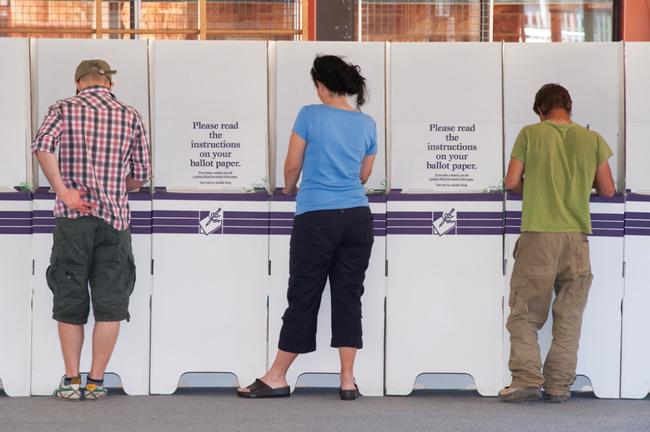
25. Voter turnout, a measure of public trust in government and of citizens' participation in the political process, was 93% during recent elections; this figure is the highest in the OECD where the average is 72%.
There is little difference in voting levels across society; voter turnout for the top 20% of the population is an estimated 94% and for the bottom 20% it is an estimated 92%, a much narrower difference than the OECD average gap of 11 percentage points and suggesting there is broad social inclusion in Australia's democratic institutions.

27. University education has received beneficial treatment for well over 70 years with innovation and occasional excesses initiated by both major political parties.
The first structural policy was enacted in 1943 by the wartime Curtain Labor Government.
So that's my list. On the whole we have it pretty good and we are pretty good.
The next time someone with an agenda seeks to curry favour with a proposal by denigrating our current record, do a little research yourself.
You may well find that the Australian position on the matter is already comparatively good.
That's not to say we can't look to improve, but that there is rarely a good basis for someone to try and guilt Australia or Australians into anything.

